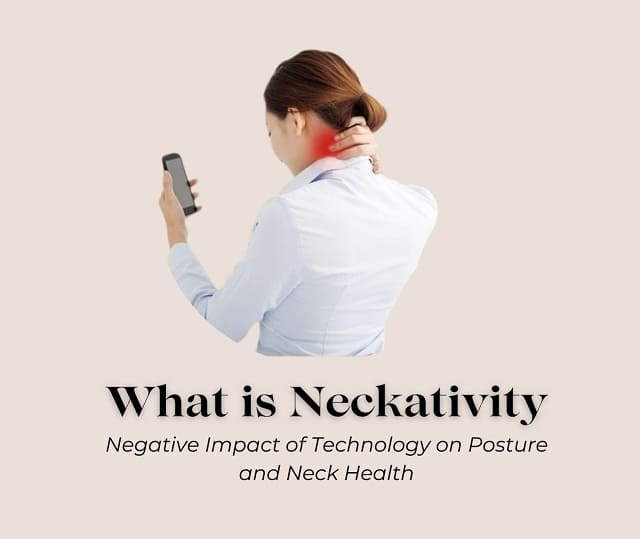Neckativity: Understanding the Negative Impact of Technology on Posture and Neck Health

In today's digital age, technology has become an integral part of our lives. We rely on our smartphones, laptops, and other devices for work, communication, and entertainment. However, this increased dependence on technology has also given rise to a new health concern: neckativity.
Neckativity refers to the negative impact of technology on our posture and neck health. The term is derived from the combination of "neck" and "negativity." The use of technology often leads to a forward head posture, which places extra stress on the neck and upper back muscles. This can cause pain, stiffness, and other musculoskeletal issues.
The prevalence of neckativity is on the rise, with more people spending extended periods of time looking down at their devices. According to a study published in the journal Surgical Technology International, the average human head weighs between 10 and 12 pounds when it is in a neutral position. However, when the head is tilted forward at a 60-degree angle, the effective weight of the head increases to around 60 pounds, placing a significant amount of strain on the neck muscles.
The consequences of neckativity go beyond just physical discomfort. Poor posture can also affect our mood and energy levels. A study published in the journal Health Psychology found that participants who sat in a slouched position reported feeling more sad, anxious, and fatigued than those who sat up straight.
So, what can we do to combat neckativity? The first step is to be aware of our posture and make a conscious effort to sit up straight and hold our devices at eye level. This can help alleviate some of the strain on our neck and upper back muscles. Additionally, taking frequent breaks from technology and engaging in physical activity can help strengthen the muscles that support good posture.
There are also a variety of exercises and stretches that can help improve neck and upper back strength and flexibility. For example, chin tucks involve gently bringing the chin back toward the neck to help stretch and strengthen the muscles in the upper back and neck. Other exercises like shoulder blade squeezes and neck rotations can also be helpful.
In conclusion, neckativity is a growing concern in today's digital world. The negative impact of technology on our posture and neck health can lead to physical discomfort, mood changes, and fatigue. By being aware of our posture and engaging in regular physical activity and stretching, we can combat the effects of neckativity and promote better overall health and well-being.
SEE: Broad-Necked Florida Man Charles McDowell Who Went Viral
Post a Comment